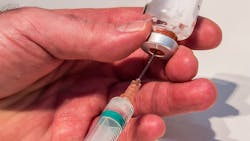BD (Becton, Dickinson and Company) (NYSE: BDX), a global medical technology company, today released a first-of-its-kind report based on an independent national survey that examines drug diversion in U.S. hospitals, an underreported contributor to the opioid epidemic.
Hospital drug diversion, when a healthcare worker “diverts” opiates or other controlled substances away from patients for personal use or sale, remains a significant challenge that is largely underdiscussed. Left undetected, diversion can lead to patient safety issues, harm to the diverter, and significant risk for the organization.
The report revealed a number of key factors that contribute to drug diversion:
· Denial of the problem in their own hospitals – Executives and providers (nurses, pharmacists and anesthesiologists) may be in denial about the diversion problem in their own facilities. The majority of providers surveyed (85 percent) were concerned about drug diversion in U.S hospitals, but only 20% believe diversion is cause for concern where they work. Despite this, half of respondents report they have observed suspicious activity in their hospitals that may have been evidence of diversion.
· Detection technology is critical – Healthcare professionals believe the tools they are using to detect diversion are only somewhat effective and expressed the need for improved real-time detection tools to identify diverters without generating false positives. Specifically, 59 percent of executives want more accurate data to reduce false positives; 54 percent would like artificial intelligence (AI) or machine learning technologies and advanced analytics; and, 53 percent would like to see mandatory diversion training. Hospital executives and providers believe that, if given the appropriate resources, diversion can be significantly reduced.
· Stressful work environment – Both executives and providers believe hospitals are stressful work environments, which may be a contributing factor that can make healthcare providers vulnerable to substance misuse. In fact, 78 percent of providers have known a peer who seemed stressed “to the breaking point.”
“This report clearly shows how difficult the issue of drug diversion is to detect, as well as the challenges hospitals and health systems face with tracking and managing cases of diversion within their own facilities,” said Perry Flowers, vice president of Medical Affairs at BD in the release. “Diversion is not a new problem in healthcare, but recent advancements in diversion tracking include machine learning to intelligently analyze opioid transactions and reduce false positives. Establishing a culture of open dialogue and reporting that encourages recovery may also be key to efforts that address diversion.”
The report — Health Care’s Hidden Epidemic: A Call to Action on Hospital Drug Diversion — is based on findings from an independent survey of 651 healthcare executives and providers commissioned by the BD Institute for Medication Management Excellence and conducted by KRC Research, a global public opinion research consultancy. The survey collected data and opinions between February 20-28, 2019, from hospital executives, hospital diversion managers, anesthesiologists, pharmacists and pharmacy technicians and a diverse group of nurses.
The report also includes additional data and personal insights from clinical thought leaders to highlight barriers and solutions and bring context to the raw data. An included resource guide focuses more narrowly on ways to support hospitals as they address this problem – with guidance such as implementing machine learning and other technologies, and improving diversion education and training. The overall goal of the report is to foster a national conversation on the best ways to address this silent crisis.
The national opioid epidemic has reached unprecedented heights, with Americans now more likely to die from opioid overdose than in a car accident — nearly 200 people a day on average, according to a 2019 analysis by the National Safety Council. Between 10 percent and 15 percent of the general population will misuse substances in their lives, including healthcare workers with access to controlled substances. This creates a vulnerability beyond that of the general population, making diversion a very serious problem across hospitals and health systems.





